Posted by
Dan Foland
Local SEO has changed over the years.
The days of simply plugging keywords into a piece of content that you want to rank are gone. Nowadays, your client’s digital marketing strategy needs to be robust and well-thought-out, utilizing various SEO tactics. It’s a lot to keep track of but failing to employ modern techniques leads to disorganized results (if any) that are near impossible to replicate.
What’s more, any number of web analytic tools can help track the SEO metrics you care about. However, to be genuinely effective, digital marketers also need to interpret data quickly, adjust when necessary, and identify opportunities when they arise.
In this post, I’ll get into three basic off-page local SEO strategies to improve your rankings. What’s more, I’ll show you how you can easily manage all of your off-page SEO data in Rank Ranger.
How Off-Page SEO Affects Content
Let’s review a little background on local content and how it’s influenced by off-page SEO before diving into promotion and distribution. After all, their connection will impact what content you’ll create in the future, where it goes, and how you promote it.
First, congratulations! You’ve created an engaging and valuable piece of content for your intended user or customer. But now, you’re confronted by a pervasive question, “What should you do with it?” In a lot of ways, SEO is the answer.
Sometimes referred to as link building, off-page SEO happens off your site and supports or directs users to your content. This translates into web traffic being driven to your website and, in turn, builds your business’ domain authority. Therefore, where your content lives, and how influential the source is, matters – a lot.
Three Off-Page Local SEO Strategies for Content Marketers
With this fresh and compelling content in hand, you’re ready to consider all the ways to amplify its reach.
Here are three effective SEO approaches to get more eyes on your content:
GMB: It’s More Than a Business Listing
A Google My Business profile does a lot more than present your business location, contact info, and customer reviews. It also has tremendous potential for content interaction and should be an integral part of distributing your content.
Take these tips, for example.
First and foremost, you should choose the most specific category for the business. That means even if there is a primary category, go deeper. For example, instead of selecting “Lawyer,” it would be better to select “Personal Injury Attorney” in your business profile.
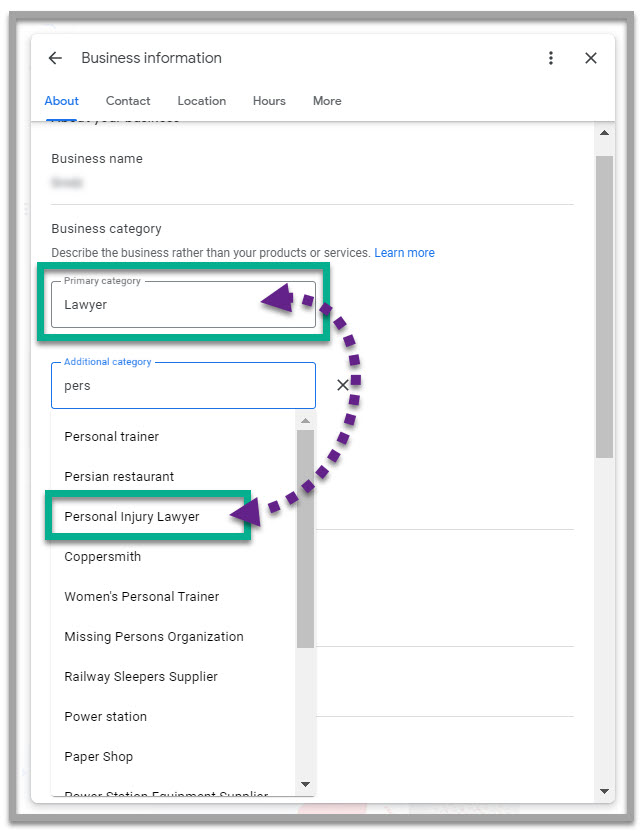
Next, remember that location is a top-ranking factor to a searcher. When you have a clear city and state displayed, your company is more likely to show up in the local pack results because it’s closer to where that ideal customer is. I mean, let’s be honest – people prefer to work with or hire nearby companies, particularly when it’s a service-based business.
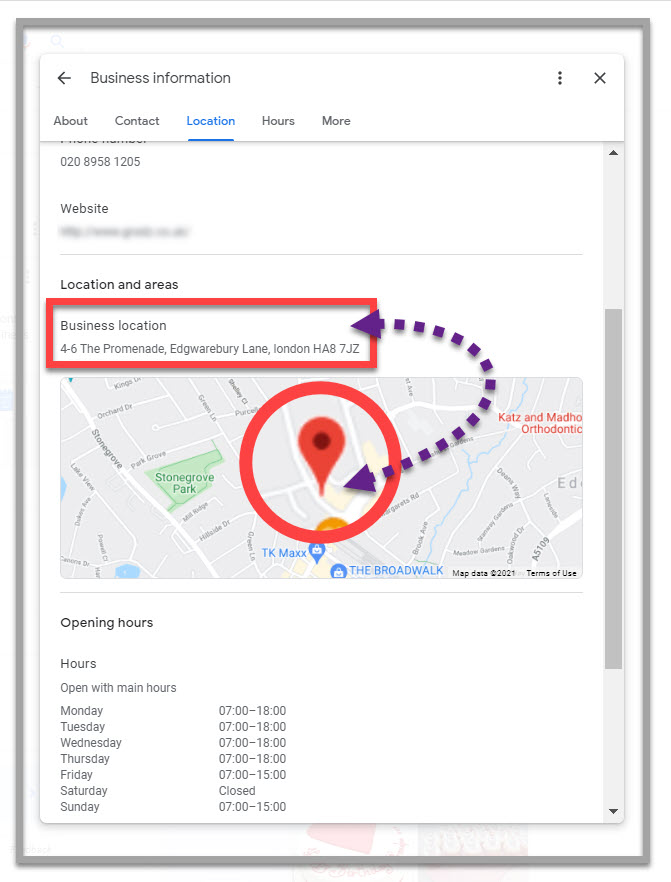
Lastly, use Google Posts as a part of your content marketing efforts. Whether you do long-form content like blog posts or share offers like free consultations, it’s always useful to have your locally relevant info captured in a GMB post. Again, this is very beneficial for brick-and-mortar shops, restaurants, and service-based businesses with fixed pricing, such as a cleaning company.
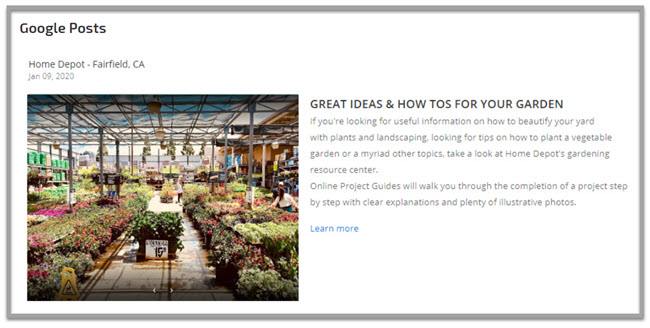
By updating your profile regularly with locally focused content, you can easily gain ground in the map-pack, quickly engage with users, and promote what’s new, or what you’re offering in the area.
To see this in your Rank Ranger local SEO rank tracker, make sure you have Google My Business integrated into your account.
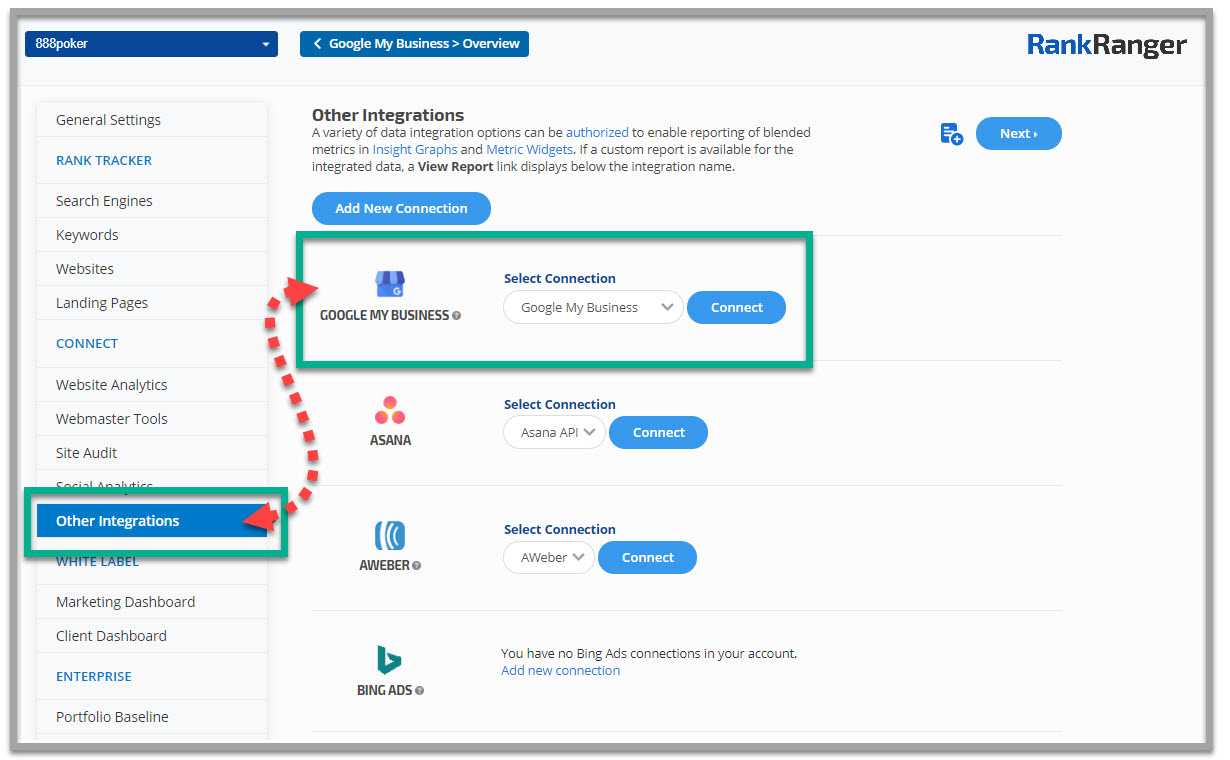
Once you have that setup, you can integrate your Google My Business data with your rank tracking data. This will allow you to see 18 months of ranking data, while Google My Business only shows you four months of data.
What’s more, you can see all aspects of your Google My Business account.
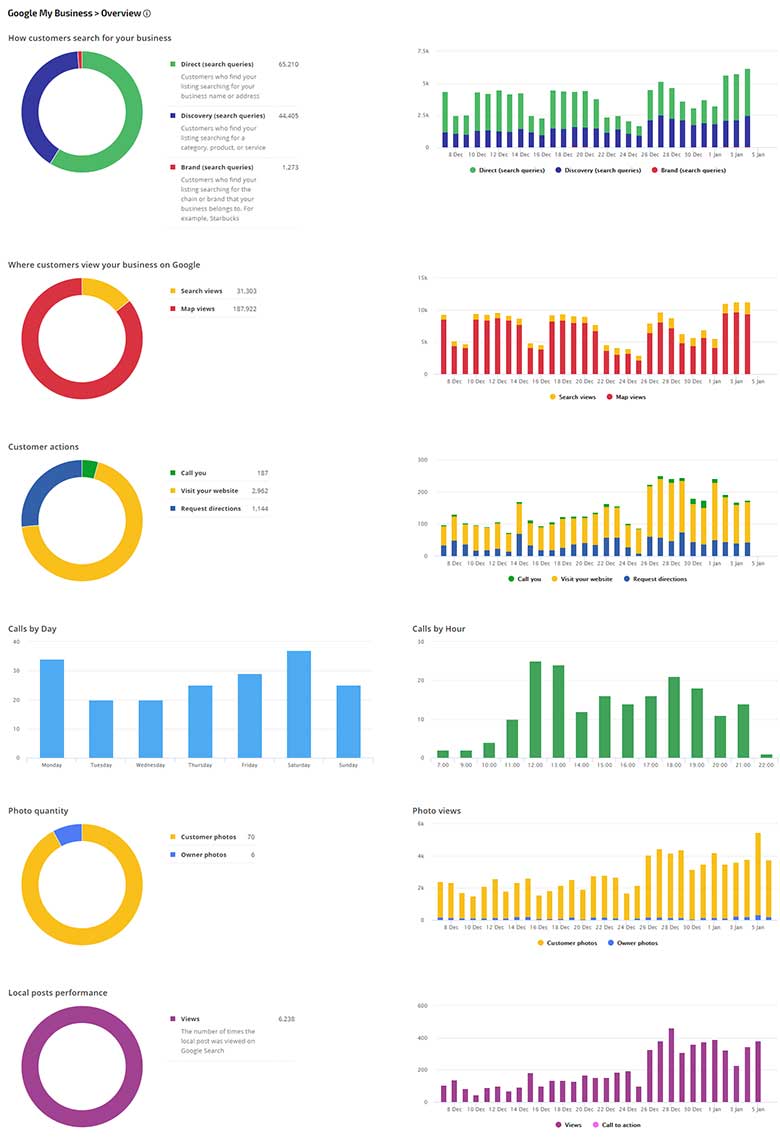
Citations & Data Consistency
As an SEO, you’re going to spend some time getting your client’s organization listed in online directories that will ideally point to their content. This listing will usually include their business name, address, phone number, and website URL. Search engines like Google scan these listings, and the more consistent and informative they are, the better.
Not to mention that some online directories are used by individuals as search engines. For example, how Yelp is used, especially for restaurants and other services.
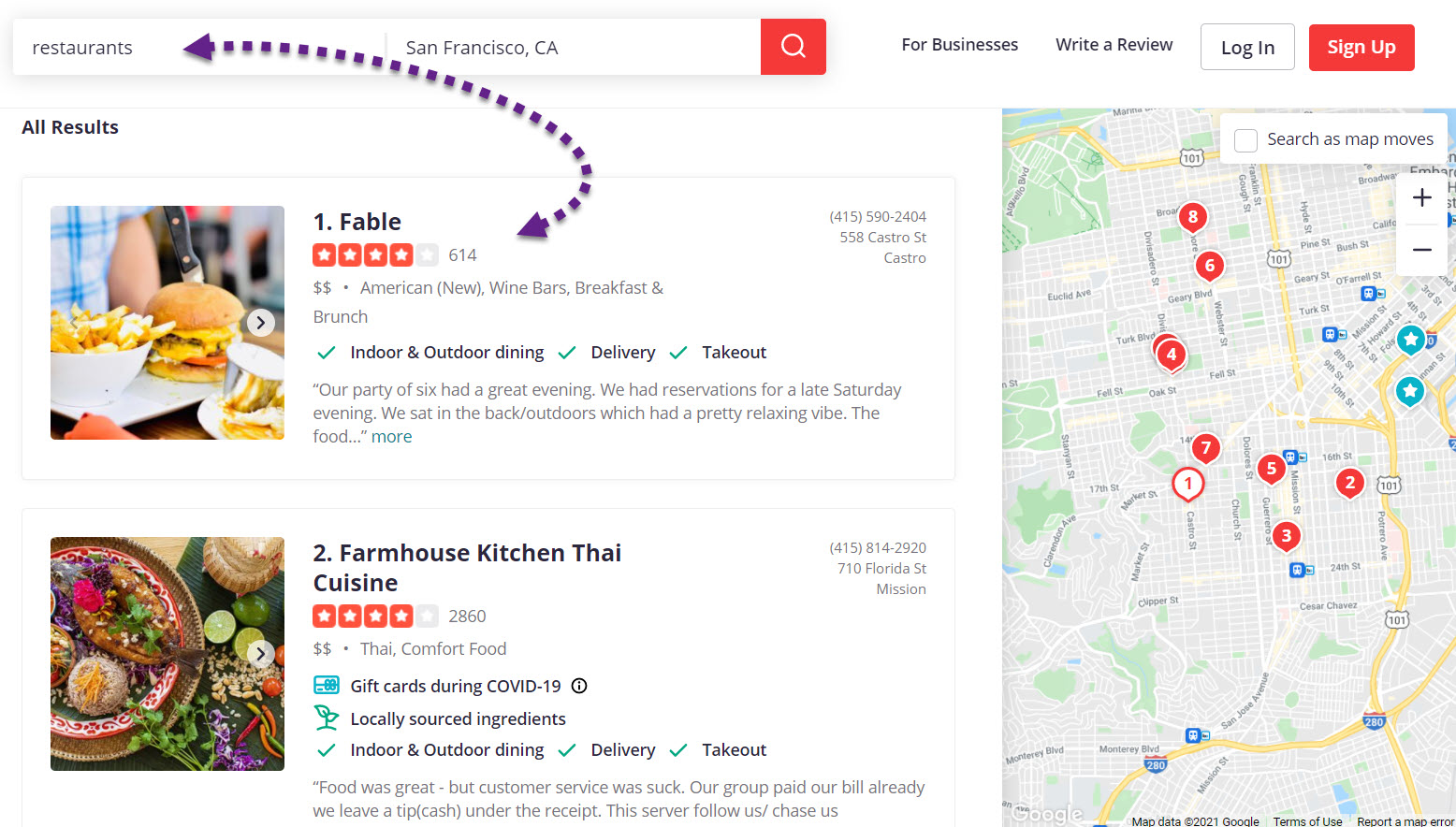
However, not every directory is worth the listing so here are a few guidelines.
- Submit business information to Apple Maps and the top 4 data aggregators, Acxiom, Data Axle (formerly Infogroup), Neustar, and Foursquare.
- Consider a directory’s domain authority (DA) and industry relevance. E.g., TripAdvisor is relevant for a hotel but irrelevant for a meal prep business.
- Determine if a listing is used and trusted by individuals who seek out your client’s services or products. If not, it’s likely that the site doesn’t provide much value to Google either, which means that it won’t be as beneficial to their business.
Besides those tips, it’s important to note that when information is inaccurate, it can have a detrimental effect on your site’s performance. It sounds obvious, but when you present your client’s content to a targeted audience, if the business name, address, and contact info are wrong, it doesn’t highlight them as the subject matter expert you intended.
Link Building
Getting other sites to link to your client’s content will (and should) be a big part of your SEO strategy. This is a significant factor in what makes businesses rank better online, positions them as an authority, and ultimately increases their brand’s exposure on the web.
To make link-building work for you, the content you create first needs to be high-quality. This means it should be relevant, well-researched, and compelling to the reader. The next step is finding authoritative sites and businesses to link to it. And that’s where things get complicated.
All links are not created equal, and some will do very little for you. Therefore, it’s important to identify which websites are best and dismiss the ones that are not applicable. For example, if you write a blog about the best places to get cupcakes in your city, getting a link from an unrelated business in another city won’t do much. You’d be better served to get a backlink from a local party planner whose visitors may need cupcakes.
While relevance is always the goal, link building is still a numbers game. After all, unrelated businesses can have aligned interests, and not every related organization shares the same goals.
Therefore, consider the following:
- Commit to sponsoring a local charity that aligns with your values. Not only do you get to give back, but this action typically results in a mention and a link on the nonprofit’s website. This then helps your client’s business rank in Google My Business (GMB).
- Pursue editorial links, i.e., a backlink in an article using a PR approach. To do this, offer unique or news-worthy information to a journalist, reporter, or editor that would make their story more valuable to their audience.
- Develop relationships with trusted editors and writers. Read their articles and comment. Engage with their tweets. Email them and let them know that you genuinely enjoyed their podcast. Networking like this will help you build connections and skip cluttered inboxes when your clients do have valuable information to share.
Make sure that you track your efforts as well! You can easily track your links with our Link Manager.
Bringing It All Together
We can agree that implementing content marketing that includes the best SEO practices is not an easy task. However, it is doable. It merely takes time, attention to detail, and careful planning. The benefit of which is a comprehensive way to establish and amplify your client’s brand. However, the downside of doing things haphazardly is a lot of wasted effort and little to show for it.
What’s more, since there’s so much that goes into a cohesive marketing plan, you must have the tools and tactics that set you up for success.

